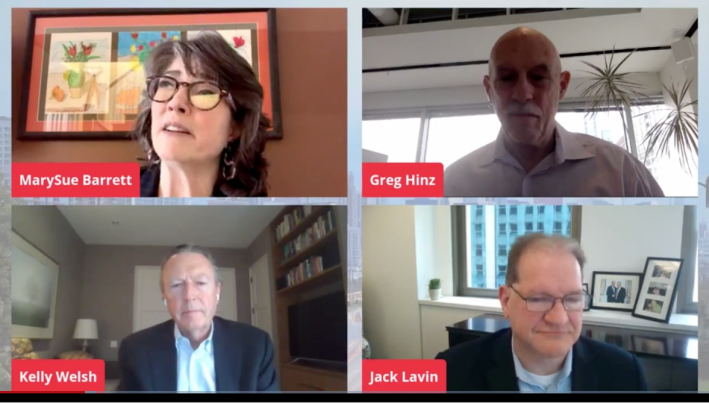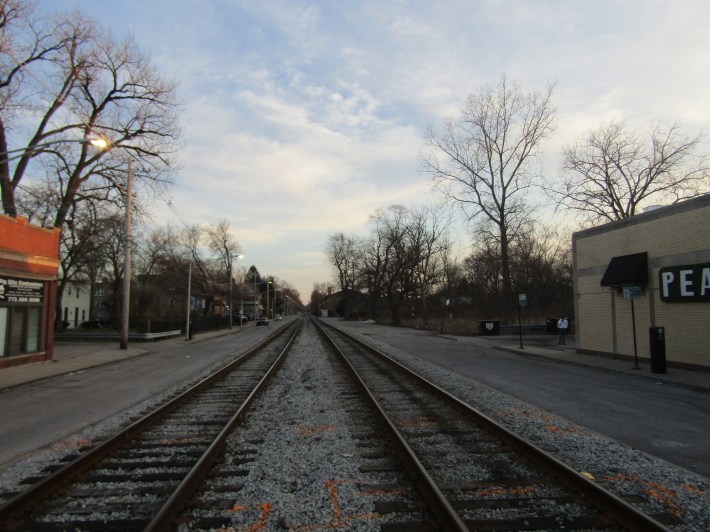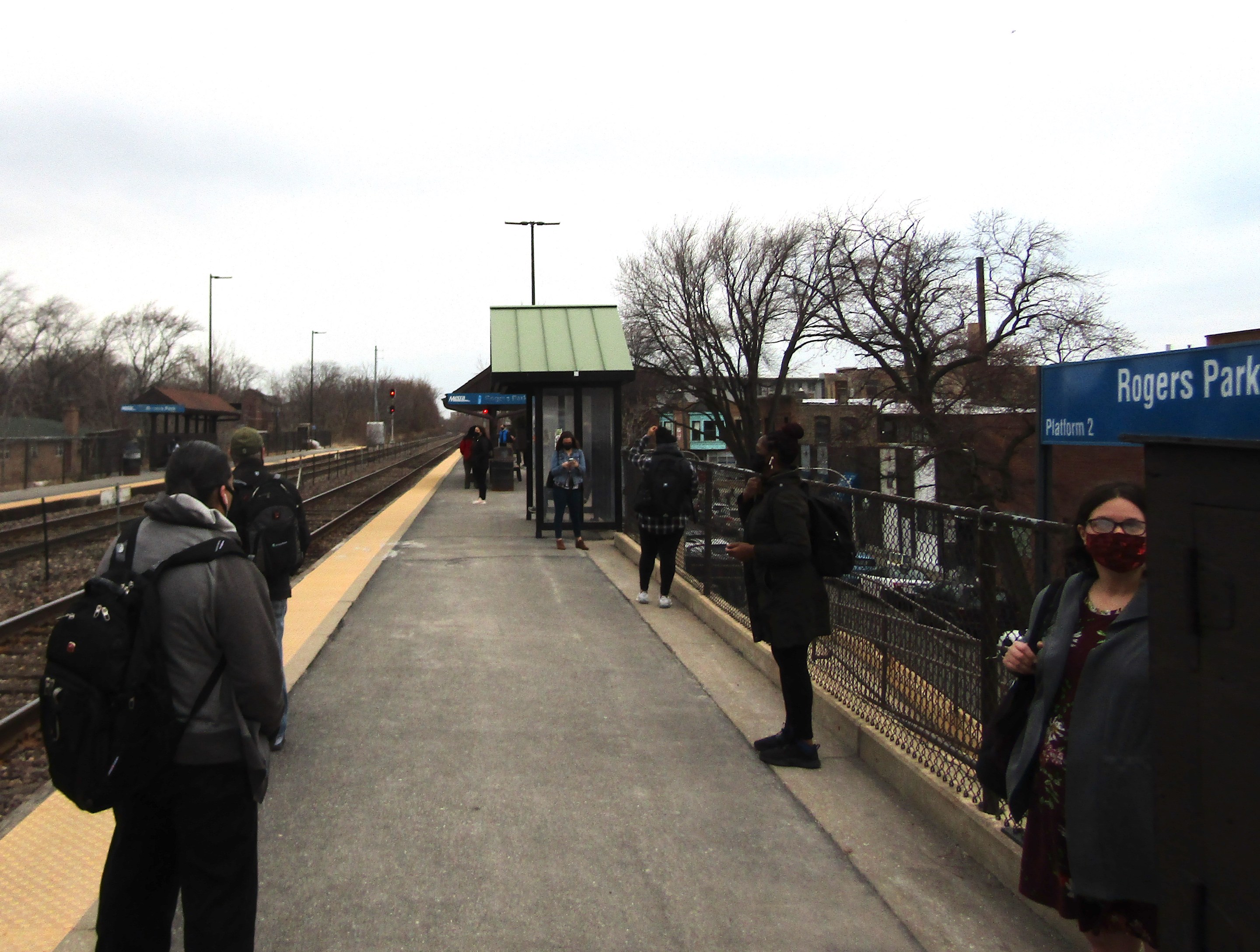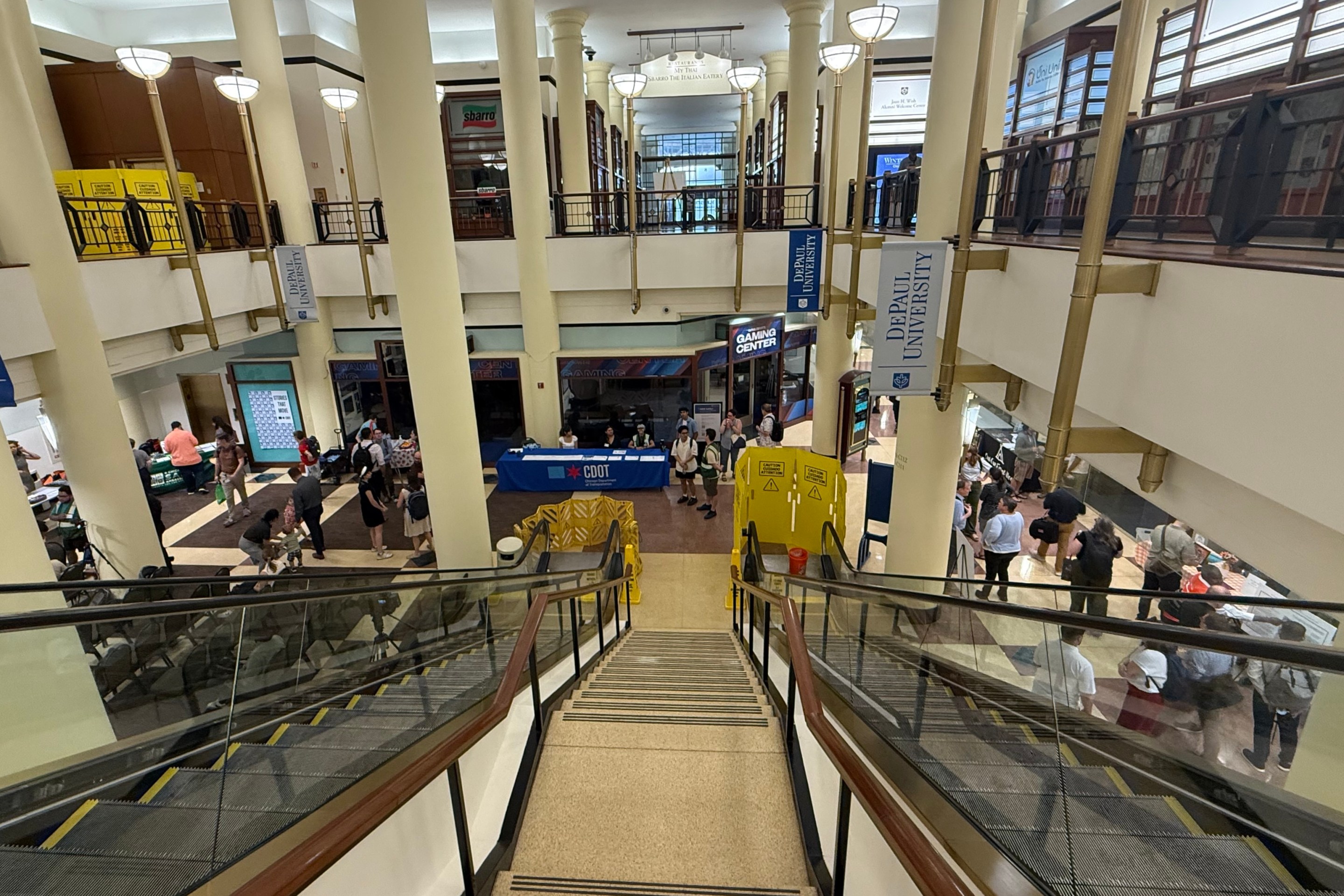At the Modernizing Illinois' Transportation Infrastructure panel, Chicago business leaders and one of the city’s biggest planning organizations agreed that transit is key to post-pandemic economic revival, while also urging investment in freight rail, shipping facilities, roads, and bridges.
The online discussion, hosted by Crain’s Chicago Business, involved MarySue Barrett, president of the Metropolitan Planning Council; Jack Lavin, president of the Chicagoland Chamber of Commerce; and Kelly Welsh, president of the Commercial Club of Chicago’s Civic Committee. Moderated by Crain’s political columnist Greg Hinz, the conversation delved into what kind of infrastructure improvements would benefit the regional economy, and how those projects should be funded. The panelists also talked about the safety measures transit agencies are taking to encourage residents to use transit while COVID-19 remains a threat, broadly agreeing that the major concerns are crowd size and the perception of safety.
Transit and Returning to In-Person Work
The panelists said they were happy with Metra's efforts to sanitize trains during the pandemic. Lavin said that the transit agencies should invest in strategies to provide real-time information on how many riders are taking a particular train, so that customers can avoid avoid crowded trains where social distancing would be difficult. “I would suggest, when they get their federal money, that they take a look at this." Metra already provides weekly crowding averages for all of its lines, but those are calculated once a week rather than in real time.
Barrett said one of the biggest barriers to using transit for essential workers has been the cost – which, she argued, can be addressed by employers subsidizing their workers’ transit expenses, or finding some other way to work with the transit agencies.
The panelists also touched on perceptions of safety on transit, and the apparent phenomenon of more rule-breaking on the CTA during this time of decreased ridership and increased unemployment. Hinz, who was criticized for running photos of sleeping homeless people in an article on the issue last week, argued that “there are times when you take subway and it's a rolling homeless shelter.” Barrett responded that the city should spend more money on services to help those residents, which certain nonprofits are already doing.

Welsh said that the biggest obstacle to returning to a normal downtown work commute situation is the current eligibility restrictions for vaccination, which are driven by a relatively limited supply of vaccines. “Before there's an influx of people coming downtown, people need to have the opportunity to be vaccinated. [What]’s holding people back, when they have the option of working from home, is the anxiety about catching COVID, and that relates to vaccination.”
Transportation Investment Priorities
The panelists expressed support for the ongoing renovations of O’Hare International Airport’s Terminals 2 and 5, saying that, even with the pandemic and decreased air traffic, the investment was worthwhile. But none of them supported an idea that keeps getting resurrected once every few years – building a third airport in the south suburbs near the town of Peotone. “Right now, [it’s] the question of the return on investment in the third airport,” Lavin said. “I think our transportation dollars can be spent elsewhere, such as mass transit and aging roads and bridges.”
Welsh and Barrett agreed that there simply isn’t a demand for a new airport, with Welsh mentioning that nearby Gary/Chicago International Airport can already handle the increasing freight volumes.
The panelists also agreed that money should be invested in freight rail and port infrastructure, with Lavin specifically urging investment in the Chicago Region Environmental and Transportation Efficiency program, which seeks to untangle Chicago’s freight and passenger rail bottlenecks. The project has made some progress, but it has been consistently hampered by a shortage of funds.
There was also broad agreement that the city, the state, and the federal government needs to invest in transit, especially the kind of transit that would get people to work outside downtowns and other existing transit hubs. Barrett noted this is an issue in many parts of Chicago and its suburbs. She used the example of Discover Financial Services’ plans to open a call center inside the former Chatham Target location, which is far enough from the nearest ‘L’ station – the Red Line’s 87th Street stop – to require a bus transfer.
Welsh noted the building is only a short distance from the Metra Electric District line’s 87th/Woodruff station. He said he supports the Fair Transit South Cook pilot, which is temporarily halving the cost of a ride on the MED and Rock Island District lines within Chicago precisely because it brings Metra fares more in line with ‘L’ fares, making Metra a more affordable transit option for transit-dependent residents. “The new Obama center can have potentially great service [via] Metra. So does Pullman.”

Lavin said that the chamber of commerce supported the pilot for the same reason, and he was disappointed that Mayor Lori Lightfoot decided not to have the CTA participate in it by collaborating with Metra on lowering the cost of transfers between the two systems. “Mobility means opportunity. I think this Metra Electric pilot is a great example of that, and that's why our organization and other organizations signed a letter [supporting it.]”
Barrett pointed to Pullman, which got more MED service during the last major pre-pandemic Metra service change, as an example of how much of a difference investment in transit can make. “Right now, the [transit] death spiral is predictable: You withdraw service, economic activity declines. Pullman's economic statistics are blowing the rest of the [nearby South Side] communities out of the water.”
The panelists all praised Illinois state rep Kambium Buckner’s (D-26th) House Bill 235, which would, most notably, require the Illinois Department of Transportation to “develop a performance-based project selection process to prioritize taxpayer investment in transportation assets that go above and beyond maintaining the existing system in a state of good repair and to evaluate projects that add capacity.”
The bill cleared the Illinois House’s Transportation Committee on March 1 and is currently awaiting the second of the required three readings by the full Illinois House. Welsh argued that much of the state’s transportation planning is more about what state representatives want in their districts than whether any research that suggests that the project is actually needed, and that Bucker’s bill would remedy that.
Barett said, given that there are usually long gaps between state capital bills, HB0235 would assure residents that the funds earmarked for infrastructure by the recent Rebuild Illinois capitol bill will be well-spent. “It helps give people the arguments and the confidence that we're putting our dollars, which we raised in Illinois back in 2019, that we're going to use them very [efficiently]."
Lavin said any transportation projects should include “the voice of businesses [and] the voice of economic development, [so] that we're not just doing things that are good on paper. We want to make sure we create jobs, to create equity on the South and West sides."
Barrett said, after after four years “where we didn't look at the federal government to provide any direction and standards,” she was looking forward to what the Biden administration could do to address transportation, especially a possible infrastructure bill.
"The increase in the federal gas tax is [something that] groups like the U.S. Chamber of Commerce and groups around the table have come around in support of,” Welsh added.






